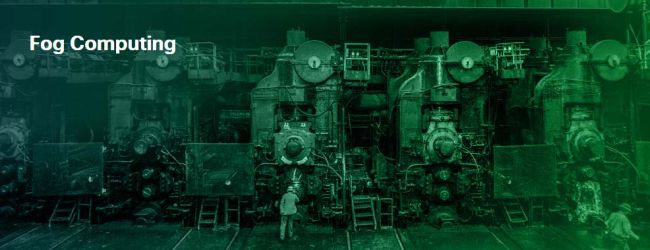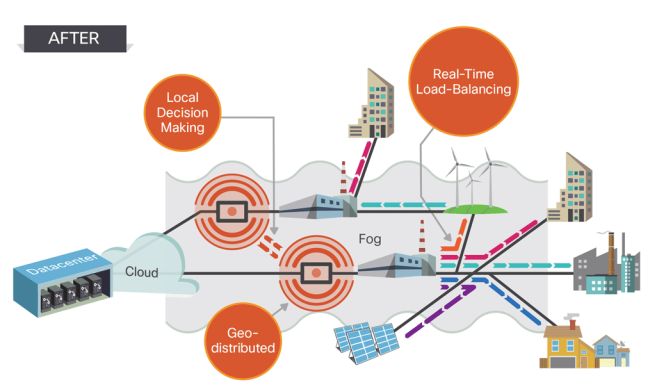Fog Computing: Collective Power Enables a New Breed of Applications and Services
It is hard to believe, but the concept of cloud computing dates back to the 1950s, when people used “dumb” terminals to access data housed in enormous mainframe computers.
We have come a long way since then. Connecting through the cloud is now commonplace. And innovators are looking for ways to complement the cloud as the Internet of Everything (IoE) brings everything online over the next few decades.
One way to address this is through fog computing, where cloud computing is extended to the edge of the network. This creates a highly virtualized platform that provides compute, storage, and networking services between end devices and traditional cloud computing data centers.
These services are the building blocks of both the cloud and the fog. They are critical for supporting the emerging wave of Internet deployments, which require mobility support and geo-distribution, location awareness, real-time interactions, and low latency. Also important is the ability to support a very large number of nodes in highly heterogeneous environments.
New applications and services:
Fog computing can help enable a new breed of aggregated applications and services:
Smart Energy Distribution: Energy load-balancing applications run on network edge devices that automatically switch to alternative energies, like solar and wind, based on energy demand, availability, and the lowest price.
Smart Traffic Lights: A video camera senses an ambulance’s flashing lights and automatically controls the traffic signals so the ambulance can pass through.
Train Maintenance: Sensors on self-maintaining trains monitor train components. If they detect trouble, they send an automatic alert to the train operator to stop at the next station for emergency maintenance.
With a fully developed fog computing architecture, customers and solution providers across industries can develop, manage, and run software applications directly on industrial networked devices. This includes hardened routers, switches, and IP video cameras.
This development puts applications closer to where IoE creates actionable data. As a result, it will be much easier to manage the colossal amount of data projected in a hyper-connected world. Adoption of fog computing will also accelerate innovation in ways never seen before. Possibilities include self-learning, self-organizing, and self-healing applications for massively distributed industrial networks.
(This Content is an Advertorial)












